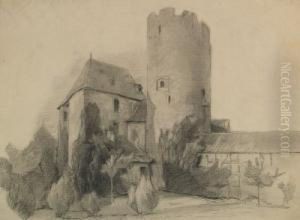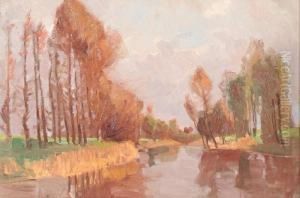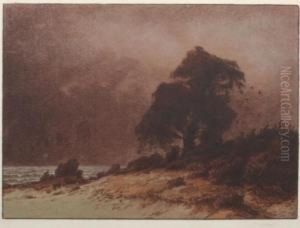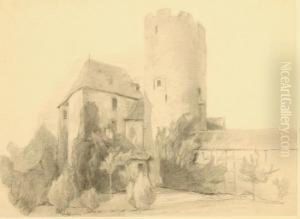Anton, Toni Wolter Paintings
Anton 'Toni' Wolter was a German expressionist painter known for his distinct style and contribution to the German art scene in the early 20th century. Born on January 27, 1880, in Neustrelitz, Mecklenburg-Vorpommern, Germany, Wolter grew up in an era where the German Empire was experiencing rapid industrialization and cultural shifts. His early life and education details are not extensively documented, but he is known to have developed an interest in art at a young age.
Wolter's work was heavily influenced by the expressionist movement, which sought to convey emotional experience rather than physical reality. This movement was characterized by the use of bold colors, distorted forms, and dramatic, often unsettling imagery. Expressionism emerged in Germany at the beginning of the 20th century, with groups such as Die Brücke (The Bridge) and Der Blaue Reiter (The Blue Rider) at the forefront of this avant-garde movement.
Throughout his career, Wolter was associated with the Berlin Secession, a group formed by artists in 1898 as an alternative to the conservative state-run Association of Berlin Artists. The Berlin Secession was crucial in promoting modern art in Germany and became a pivotal platform for expressionist artists, including Wolter.
Sadly, Wolter's life and career were cut short due to the 1918 flu pandemic, which claimed his life on November 10, 1918, in Berlin, Germany. Although his career spanned a relatively short period, Wolter made significant contributions to the expressionist movement. His work is noted for its intensity and emotional depth, and he is often remembered alongside other expressionist painters who sought to challenge the traditional norms of fine art during their time.
Due to his untimely death, Wolter's oeuvre is not as extensive as some of his contemporaries. Nevertheless, his paintings are a testament to the innovative and rebellious spirit of early 20th-century expressionism. They continue to be studied and admired for their raw power and ability to capture the existential angst of the era.



